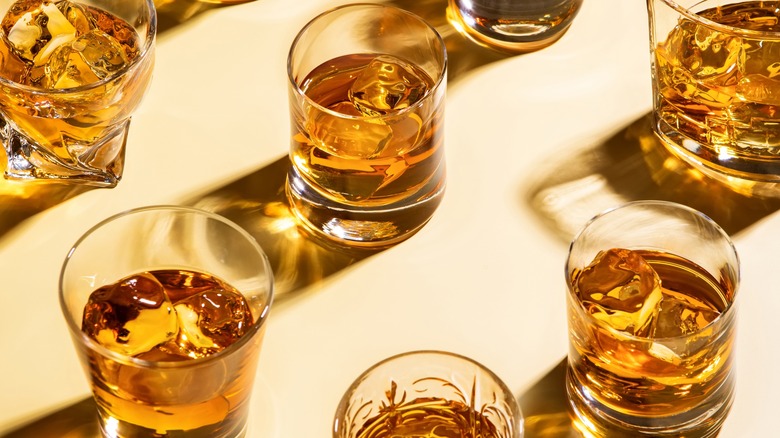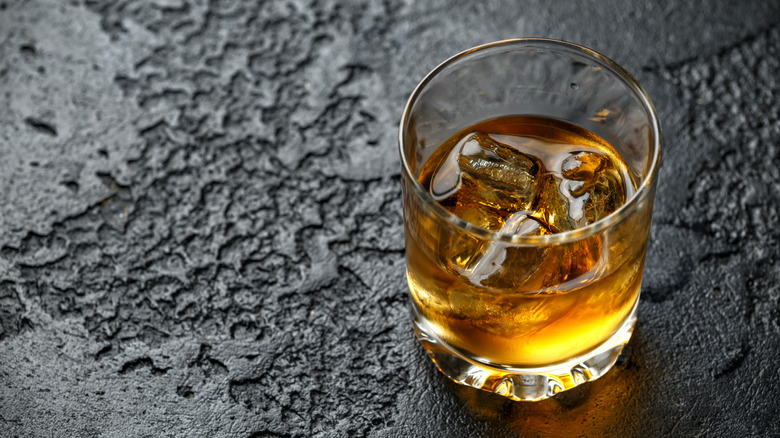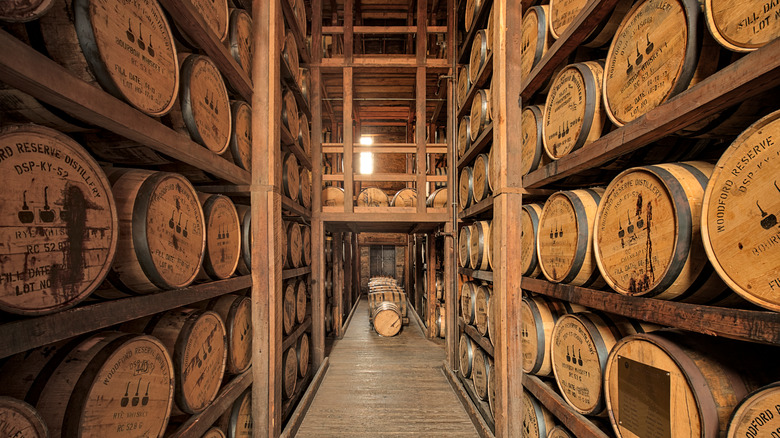Does Bourbon Have To Come From Kentucky?
When you think of Kentucky, rolling hills, horse racing, and bluegrass music probably come to mind, but you're bound to picture one more cultural fixture — bourbon. Here, bourbon is more than just an ingredient in classic Kentucky Derby fare like mint juleps, it's a way of life. Bourbon is so deeply intertwined with Kentucky's culture that they're virtually synonymous. An impressive 95% of the world's bourbon is made in Kentucky – but what about the other 5%? As it turns out, it is possible to make bourbon outside of the Bluegrass State.
As an appreciation for this quintessentially Kentuckian spirit spreads, so has the desire for distillers in other places to distill it. Across the U.S., you can find spirit producers crafting their unique takes on bourbon, pulling from local traditions, flavors, and ingredients. Still, there is a reason Kentucky is the bourbon capital of the world, and that's worth highlighting too.
There's something in the water in Kentucky
Kentucky's claim to bourbon fame comes down to more than just a rich distilling tradition, it also has a lot to do with geography. Water in this region is naturally limestone-filtered, which according to some, makes bourbon produced here taste cleaner and smoother. This may be because limestone filters out flavor-altering minerals like iron and sulfur. The climate in this region also gives distillers an advantage — thanks to hot summers and cool winters, the oak barrels holding bourbon naturally expand and contract, enhancing their flavoring and filtration action.
To showcase its signature spirit, Kentucky has a bourbon trail that guides visitors through the bourbon mecca, teaching them about the history of the spirit and introducing them to distillers large and small, including Jim Beam, Maker's Mark, and Evan Williams, among others. But even if you're not exploring the bourbon trail in Kentucky, you can still find bourbon distilleries in other areas of the country. Variations in water, climate, grain recipes, and distilling methods make the tasting experience unique. Distilleries from Balcones in Texas to Woodinville Whiskey in Washington show that bourbon is more than a Kentucky staple; it's an evolving American tradition.
What is bourbon, really?
While it may be surprising to some, bourbon regulations don't require that it be produced in Kentucky. According to the American Bourbon Association, bourbon does need to be produced in the United States, but its production method is where things get more specific. Importantly, the grain mix used to make bourbon should be made of at least 51% corn, and the other grains can vary based on the distiller's recipe. Corn's sweet baseline is complemented by other grains — rye adds spice, wheat brings bready notes, and malted barley introduces toasted cereal flavor.
Additionally, bourbon should be distilled to no more than 160 proof and be aged in new charred oak barrels. The wood used to make the barrels is carefully selected and charred to precise specifications, and once it's in contact with bourbon during storage, something interesting happens. The bourbon picks up chemical compounds from the wood that make it taste more complex, and at the same time, the char on the wood filters out harsh-tasting sulfur compounds.
All of these specifications set bourbon apart from whiskey, which is a catchall term for spirits made from fermented grain mash, and especially from Fireball Cinnamon, a sweet malt beverage (not whiskey, by definition). Bourbon is the most analogous (although very different from) Scotch, which has strict regulations that maintain its integrity.


